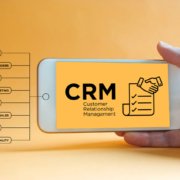3 Tips for Better Senior Living Advertising Campaigns
Want to create better senior living advertising campaigns—ones that entice people to click, call, or visit? Here are three tips to keep in mind.
1. Don’t put all your eggs in the same advertising basket.
If you were advertising to, say, twenty-somethings, you’d likely focus most of your advertising efforts online. With older adults, however, you need to spread your advertising dollars across different media—print, radio, direct mail, pay-per-click, and remarketing.
This isn’t surprising, considering the demographic. After all, older adults grew up reading the daily paper and listening to the radio, habits that continue even in this hi-tech age.
- According to Statista, 23% of adults aged 60 or older read a print newspaper daily, 13% read the paper several days a week, and 18% once a week.
- According to Statista, older generations are more inclined to listen to the radio regularly.
At the same time, however, older adults are also embracing technology and spending more time online. Consider the following stats:
- In 2000, 14% of those aged 65 and older were internet users; now 73% are. [Source: Pew Research Center]
- Baby Boomers spend more time online than Millennials, and a staggering 92% of Boomers shop online. [Source: The Shelf]
- 75% of all Boomers are on Facebook, and 35% use business-focused networking sites, such as LinkedIn. [Source: Kenshoo]
- Boomers are almost as likely as Millennials to own a tablet. [Source: Marketing Charts]
- 68% of Boomers own a smartphone. [Source: Pew Research Center]
So, how should you allocate your advertising budget?
This will depend on a variety of factors. Recent past success is often a good indicator of future success, so you can start by evaluating what has worked best in the recent past (within the last year or two).
For example, if the best ROI has historically come from running spots on your local country radio station, it probably makes sense to allocate a chunk of your budget to a new radio campaign.
But even as you rely on “tried and true” methods, you should continue to experiment with pay-per-click and remarketing ads. (The latter refers to ads that seemingly “follow” people around after they visit your site.)
And you should avoid dismissing an ad vehicle—especially a digital one—simply because it didn’t work in the past. For example, just because Facebook advertising didn’t work well for your community eight years ago, that doesn’t mean it won’t work today. Quite the opposite, in fact. As more Boomers spend time on Facebook, chances are good that Facebook ads will work better now than they did a decade ago.
2. Measure, measure, measure.
The biggest mistake that senior living communities make is that they spend all this money on advertising, but they haven’t built in ways to measure success. Talk about a waste of valuable marketing budget!
Make sure you’re following best practices when it comes to measuring an ad campaign’s effectiveness:
- For online ads, make sure tracking URLs are set up. Tracking URLs will help you see which online ads are delivering the most traffic and conversions.
- For any print or radio ads, make sure you include ad-specific phone numbers and/or website addresses. For example, for all the radio ads you run on that country station, you’d use a specific phone number that you only include in those ads. Ditto website URLs. (Companies like CallRail can help with this.)
- Make sure your website’s backend provides the insight and visibility you need. Ideally, you’ll want to have some sort of “traffic resources” option available in your marketing automation software that easily breaks down the traffic referral sources.
- Make sure staff always asks the question “How did you hear about us?” And make sure you have a central repository for recording this info.
Allow the metrics to inform your ad-buying decisions.
Complacency can easily take over when it comes to advertising. Not to mention, you might have long-term relationships with sales reps, newspapers, radio stations, and so forth. Still, you need to make decisions based on real data, not relationships.
For example, if you’ve been running radio ads for years on the country station, but the ads are no longer delivering results, ask questions. What’s changed? Is the copy stale? Do you need to adjust the flight schedule/time of day the spots run? Has something changed with the station’s demographics? (Maybe the country station has tweaked its format to a more contemporary feel, rather than classic country tunes. As such, it’s skewing younger.)
Yes, you should resist dumping something the minute it stops working. But be open to moving on if the metrics are indeed telling you something is no longer delivering ROI despite tweaks and fixes. And make sure you’re paying attention to the right metrics. A boatload of website traffic can feel good. But unless that anonymous web traffic is converting into leads and those leads into tours and move-ins, what’s the point?
3. When it comes to the ad’s content, be human.
You’re selling a very personal experience to older adults—the next chapter of their lives. (And, for many, the final chapter of their lives.) This is a BIG deal. Listing a bunch of amenities isn’t going to make your community memorable.
So, what can you do to create personal content? Tell stories. Humans love hearing stories. Stories help us experience another world and another life, which is precisely what you want your ads to do—to help the reader or listener picture themselves living in your community.
For example, imagine coming across this blurb in a nicely designed print piece and/or direct mailer:
Stories can involve residents, but also staff—your head chef, your groundskeepers, the facilities manager, etc. You could also highlight adult children who helped get Mom or Dad into the community. And the stories could serve as themes. The Margot “story” could work as a print ad and direct mailer. But you could also have Margot voice the radio spot and be part of a video ad that you run on Facebook.












